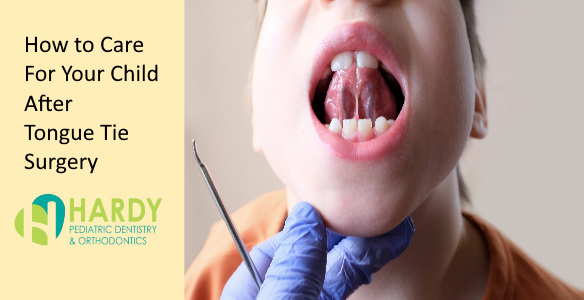How To Handle Your Child’s Tongue-Tie
What Are Dental Sealants?
March 1, 2019Are Dental X-Rays Safe?
March 15, 2019
Many infants are born with restricted tongue movement, commonly known as tongue-tie or lip-tie. This occurrence makes nursing and tongue and lip movement difficult as the infant’s tongue or lips are attached to the mouth with excessive connective tissue. Tongue-tie is a quick process that can resolve this issue through the use of laser dentistry and topical numbing anesthetic. If your infant is struggling with nursing, bottle feeding, or having difficulty eating, this procedure might be for you. Learn how tongue-tie affects an infant and what the process is to correct this issue!
What Is Tongue-Tie?
A very common physical abnormality in infants is called ankyloglossia, or tongue-tie. This condition restricts the tongue’s range of motion and causes difficulty during breastfeeding, digestion, and speech development. The term tongue-tie (or lip-tie in some cases) refers to the development of an infant’s tongue and lips being attached to the mouth with excessive connective tissue, thus impeding the movement of the tongue and/or lips, depending on the severity. The tissue can be unusually short, thick, or tight, that tethers the tip of the tongue to the floor of the mouth. Known mostly for its effect on breastfeeding, if an infant’s tongue-tie is severe enough, it can affect jaw and dental development, breathing, chewing, and swallowing. It is also associated with reflux in infants, which can cause them extreme discomfort. If not fixed, a child may have difficulty eating as the tongue-tie interferes with their developing baby teeth.
Sometimes tongue-tie isn’t as easily recognizable as other physical deformities. While reasons for its occurrence is relatively unknown, other than some stating that it’s caused by genetic factors, about 4-6% of the population is born with ankyloglossia. Some symptoms of tongue-tie include trouble sticking the tongue past the lower front teeth, a tongue that appears notched or heart-shaped when stuck out, and difficulty lifting the tongue up or moving it from side to side. Even if a baby is able to breastfeed well with ankyloglossia and not injure the mother while doing so, long-term effects can include dental cavities, spacing of the teeth, need for braces, breathing/sleeping problems, issues with posture, and headaches. Receiving a tongue-tie correction procedure will allow your child to eat and breathe easier, and avoid future problems that could be costly.
Treatment Options
The most common way to treat ankyloglossia is through a frenectomy, which is a quick and painless process that takes around one minute to perform. This involves cutting the lingual frenum to “untie” the tip of the tongue from the floor of the mouth, usually through the use of a soft-tissue laser or scalpel. In certain cases, the patient can “outgrow” this issue as the tongue matures or if the frenum becomes longer in length throughout development. Laser dentistry allows tongue-tie procedures to be performed with little to no bleeding and minimal discomfort for the child. Modern dental laser treatments have improved tongue-tie corrections and offer many benefits over surgical options, such as:
- No need for stitches
- Reduced pain
- Minimal bleeding and swelling
- Faster healing
- Increased precision
- Reduced infection risk
Stitches are used infrequently since the laser cauterizes the wound and seals blood vessels to begin immediate clotting, which leads to less bleeding and swelling. Decreased bleeding allows for faster regeneration and healing of the area affected, and increased precision avoids inadvertently damaging other areas that are not being operated on. Many times, using a laser eliminates the need for anesthesia, so there is less pain involved. With the accuracy that lasers have in correcting tongue-tie, your child will have full tongue mobility and be able to breastfeed as soon as the procedure is finished. Make sure to schedule an appointment with your dentist if your infant has trouble breastfeeding, a speech-language pathologist thinks that your child’s speech is affected by tongue-tie, your older child struggles with problems eating, speaking, or reaching the back teeth, or if you are bothered by symptoms of tongue-tie.
After Care Treatment
For a few days after the procedure, the area around the tongue may be tender to the touch, and your dentist might prescribe your child with some pain medication to reduce inflammation. Patients should avoid spicy or hot foods for at least a week until repair tissue grows around the area that was treated. Try using an antimicrobial mouthwash to keep the area clean and reduce the irritation around the surgical wound. If you notice any signs of infection, notify your dentist for instructions on how to care for the infected area.
If you or your child is struggling with the effects of tongue-tie, call Hardy Pediatric Dentistry & Orthodontics today at (720) 887-6003 for a detailed examination to determine what option is best for you to improve your oral health!


